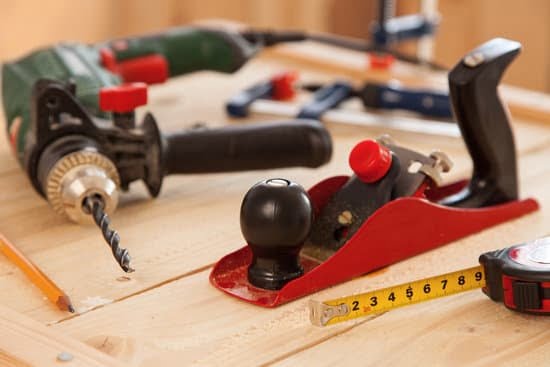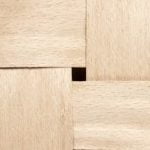Stained woodwork adds charm and character to a home, but if not properly maintained, it can lose its luster over time. Knowing how to clean stained woodwork that is not sealed is essential to preserving its beauty and integrity.
Without a protective sealant, the woodwork is more vulnerable to damage from dirt, dust, and stains. In this article, we will explore the importance of cleaning non-sealed stained woodwork and provide you with effective techniques to keep it looking its best.
When it comes to cleaning stained woodwork that is not sealed, the first step is identifying the specific type of woodwork that needs attention. Different types of wood may require different cleaning methods to ensure they are properly cared for and maintained. By understanding the characteristics of your woodwork, you can choose the right cleaning materials and techniques that will be most effective in restoring its appearance.
In order to successfully clean stained woodwork that is not sealed, it is crucial to gather the necessary materials before beginning the cleaning process. From gentle cleaners to soft cloths, having the right tools on hand will make the task easier and more efficient. In addition to preparing the proper materials, taking steps such as testing a small area and properly drying and finishing the woodwork are all important aspects of maintaining its cleanliness and longevity.
Identifying the Type of Woodwork
When it comes to cleaning stained woodwork that is not sealed, one of the first steps is to identify the type of woodwork that needs to be cleaned. Different types of woodwork may require different cleaning methods and materials. Whether it’s hardwood floors, wooden cabinets, or doors and trim, understanding the specific type of woodwork you are dealing with will help you choose the most effective cleaning techniques.
Determine the Finish
Before you start cleaning the stained woodwork, it’s important to determine whether the wood has any finish on it. If the wood is not sealed, it may be more susceptible to damage from moisture, making it even more crucial to use the right cleaning methods. Identify whether the wood has a wax finish, varnish, shellac, or if it is completely unfinished.
Assessing the Stain
Another key factor in identifying the type of woodwork is assessing the type of stain present on the surface. Whether it’s water stains, grease marks, or stubborn grime build-up, knowing what kind of stain you’re dealing with will help you choose the appropriate cleaning solution. Different stains may require different approaches for effective removal without damaging the wood.
Once you have determined what specific type of woodwork needs to be cleaned and have assessed any existing stains or finishes present on the surface, you can proceed with gathering the necessary materials and preparing the area for cleaning. By taking these initial steps carefully, you can ensure that your cleaning process is both effective and safe for your non-sealed stained woodwork.
Gathering the Necessary Materials
When it comes to cleaning stained woodwork that is not sealed, having the right materials is crucial to achieve optimal results. Before starting the cleaning process, it’s important to gather all the necessary items to ensure a thorough and effective job.
Some of the essential materials you will need include a mild wood cleaner or detergent, white vinegar, warm water, soft cloths or sponges, a bucket for mixing solutions, protective gloves, a vacuum with a brush attachment, and protective gear such as goggles and masks.
One effective way on how to clean stained woodwork that is not sealed is by creating a homemade cleaning solution using ingredients like white vinegar and warm water. This natural solution can help remove dirt and grime from the woodwork without causing any damage.
Additionally, using soft cloths or sponges instead of abrasive materials can prevent scratches on the surface of the woodwork while ensuring a thorough clean. Remember to wear protective gloves while working with cleaning solutions to protect your skin.
Before applying any cleaning solution to the entire surface of the woodwork, it’s recommended to test a small area first to check for any adverse reactions. This step is crucial in determining if the cleaning method you have chosen is suitable for your specific type of woodwork.
By testing a small area, you can ensure that the cleaning process will not cause any unwanted discoloration or damage. Once you have gathered all your materials and conducted a test patch, you are now ready to proceed with cleaning your stained woodwork that is not sealed.
| Cleaning Materials | Importance |
|---|---|
| Mild Wood Cleaner or Detergent | Effectively removes dirt and grime from woodwork |
| White Vinegar | Natural alternative for cleaning solutions |
| Soft Cloths or Sponges | Prevents scratches on wood surface |
Preparing the Area
Clearing the Space
Before you begin cleaning your stained woodwork that is not sealed, it is essential to clear the surrounding area. Remove any items such as furniture, decorations, or other objects that may obstruct your access to the woodwork. This will not only make the cleaning process easier but also prevent accidental damage to your belongings while you work on the woodwork.
Protective Coverings
To avoid splashing or dripping cleaning solutions on nearby surfaces or flooring, consider using protective coverings. Lay down a drop cloth or plastic sheeting to protect floors and carpets from any potential spills or splatters during the cleaning process. Additionally, you may want to cover nearby furniture with a cloth or plastic covering to prevent any accidental contact with cleaning solutions.
Ventilation
Proper ventilation is crucial when working with cleaning solutions to ensure adequate airflow and prevent inhaling potentially harmful fumes. Open windows and doors in the room where you are cleaning the stained woodwork to allow fresh air to circulate. If possible, use a fan to help dissipate any strong odors from the cleaners. Ventilating the area will not only make it more comfortable for you but also promote faster drying of the woodwork after cleaning.
Testing a Small Area
When it comes to cleaning stained woodwork that is not sealed, it is crucial to test a small area before proceeding with the entire cleaning process. This step is important because different types of wood and finishes may react differently to cleaning solutions, and you want to avoid causing any damage or discoloration to the woodwork.
By testing a small, inconspicuous area, you can ensure that the cleaning method you choose is safe and effective for the specific type of woodwork you are working on.
To test a small area, choose a spot that is not easily visible, such as behind furniture or in a corner. Apply a small amount of your chosen cleaning solution to the area using a soft cloth or sponge. Gently rub the solution into the woodwork and then wait for a few minutes to see if there are any adverse reactions.
Look for any changes in color, texture, or finish on the woodwork. If there are no negative effects, you can proceed with confidence knowing that the cleaning method is safe to use on the entire surface.
If you notice any unwanted reactions during the testing phase, stop immediately and try a different cleaning method or solution. It is better to be cautious and take the time to test a small area first rather than risk damaging your woodwork by applying an unsuitable cleaning solution.
Remember that each piece of stained woodwork is unique, so what works for one may not work for another. Taking this extra step will help ensure that your non-sealed stained woodwork remains clean and beautiful for years to come.
Cleaning Techniques
Stained woodwork that is not sealed requires a different approach to cleaning compared to sealed woodwork. It is essential to use the right techniques to avoid damaging the wood while effectively removing any stains or dirt buildup. Here are some detailed cleaning techniques to help you clean stained woodwork that is not sealed:
- Dusting: Start by dusting the woodwork with a soft cloth or duster to remove any loose dirt and debris. Make sure to pay attention to crevices and corners where dust tends to accumulate.
- Mild Soap and Water: Mix a small amount of mild dish soap with water in a bucket. Use a sponge or microfiber cloth dampened with this solution to gently clean the stained woodwork. Avoid using excess water, as it can damage the wood.
- Vinegar and Water Solution: For tougher stains, you can try using a solution of equal parts vinegar and water. Vinegar is a natural cleaning agent that can help break down stubborn stains without causing harm to the wood.
It is crucial to remember never to use harsh chemicals or abrasive cleaners on stained woodwork that is not sealed, as they can strip away the stain or damage the wood’s surface. Additionally, always make sure to wipe down the woodwork with a clean, damp cloth after cleaning to remove any residue left behind by the cleaning solution.
By following these cleaning techniques, you can effectively clean stained woodwork that is not sealed without compromising its appearance or integrity. Regular maintenance and proper care will help prolong the life of your woodwork and keep it looking beautiful for years to come.
Lastly, don’t forget to assess the results after cleaning a small test area before proceeding with the entire surface of your non-sealed stained woodwork. This precaution will ensure that your chosen cleaning method is effective without causing any unwanted damage.
Removing Tough Stains
Woodwork that is not sealed can be more susceptible to tough stains that are difficult to remove. Whether it’s water stains, ink, or oil-based stains, knowing how to effectively treat these blemishes can help restore the beauty of your woodwork. Here are some methods for removing tough stains from woodwork that is not sealed.
For water stains on woodwork, a simple mixture of equal parts vinegar and olive oil can help lift the stain. Apply the mixture onto a soft cloth and gently rub it onto the affected area. Let it sit for a few minutes before wiping it off with a clean cloth. For ink stains, rubbing alcohol or acetone can be effective in breaking down the pigments. Dab a small amount onto a cloth and gently blot the stain until it fades.
Oil-based stains such as grease or food spills can be trickier to remove. One method is to sprinkle cornstarch or baking soda onto the stained area to absorb the oil. Let it sit for several hours before brushing it off and wiping the surface clean with a damp cloth.
For stubborn oil stains, a paste made of dish soap and baking soda can be applied and left overnight before rinsing it off in the morning. These techniques can help tackle tough stains on non-sealed woodwork without damaging the surface.
Drying and Finishing
After successfully cleaning stained woodwork that is not sealed, it is crucial to ensure that the woodwork dries properly to prevent any damage or warping. To do this, follow these steps:
1. Allow Sufficient Air Circulation: Place fans or open windows in the room to promote air circulation around the woodwork. This will help accelerate the drying process and prevent any moisture from getting trapped.
2. Use a Dry Cloth or Towel: Gently pat the woodwork with a dry cloth or towel to absorb any excess water left after cleaning. Make sure not to rub vigorously as this could potentially damage the wood surface.
3. Apply a Protective Finish: Once the stained woodwork is completely dry, consider applying a protective finish such as wax or polyurethane to seal and protect the wood from future stains and damage. This will also enhance the natural beauty of the wood grain.
It is important to note that proper drying and finishing are essential steps in maintaining non-sealed stained woodwork. By following these guidelines, you can ensure that your woodwork remains clean, protected, and looking its best for years to come.
Maintenance Tips
Stained woodwork that is not sealed requires special care and attention to maintain its cleanliness and appearance. By following some maintenance tips, you can keep your woodwork looking its best for years to come.
One important tip for maintaining stained woodwork that is not sealed is to regularly dust and wipe down the surfaces. Dusting can prevent dirt and grime from building up on the wood, which can be harder to remove over time. Use a soft cloth or a microfiber duster to gently wipe down the woodwork, being careful not to scratch or damage the surface.
In addition to regular dusting, it is also essential to avoid using harsh chemicals or abrasive cleaners on stained woodwork that is not sealed. These can strip away the stain or damage the natural beauty of the wood. Instead, use a mild soap solution or a specially formulated wood cleaner to gently clean the surfaces.
Always remember to test any cleaning product on a small, inconspicuous area before applying it to the entire woodwork. This step ensures that the cleaner will not cause any damage or discoloration to the wood.
Conclusion
Regular cleaning and maintenance of stained woodwork that is not sealed is essential to preserve its beauty and longevity. By following the proper cleaning techniques and using the right materials, you can ensure that your woodwork remains in top condition for years to come. Remember, neglecting to clean non-sealed stained woodwork can lead to irreversible damage and could potentially ruin the appearance of your furniture or trim.
In order to effectively clean stained woodwork that is not sealed, it is crucial to identify the type of wood you are working with and gather the necessary cleaning materials. Preparing the area before starting the cleaning process, testing a small area for compatibility with cleaning solutions, and utilizing different cleaning techniques based on the level of stains are all key steps in achieving a successful outcome.
Additionally, knowing how to remove tough stains and properly dry and finish the woodwork will help maintain its beauty over time.
Overall, maintaining cleanliness and regularly caring for non-sealed stained woodwork is a simple yet important task for homeowners or furniture enthusiasts. With proper care and attention, you can enjoy the natural beauty of your woodwork for years to come. Remember these tips on how to clean stained woodwork that is not sealed in order to keep your furniture looking its best.
Frequently Asked Questions
How Do You Get Stains Out of Unsealed Wood?
To get stains out of unsealed wood, you can start by gently sanding the affected area to remove the stained layer. You can also try using a mixture of baking soda and water or vinegar and water to scrub away the stain. Make sure to clean and dry the wood thoroughly afterwards.
What Happens if You Don’t Seal Wood Stain?
If you don’t seal wood stain, it can lead to several issues such as discoloration, warping, and even rotting over time. Unsealed wood is more susceptible to damage from moisture, dirt, and other external elements that can compromise its integrity. Sealing the wood stain helps protect it from these potential problems.
How Do You Clean Stained Wood Before Sealing?
Cleaning stained wood before sealing is important to ensure a smooth and successful finishing process. Start by dusting off any surface dirt or debris using a soft cloth or brush.
Then, use a wood cleaner or a mixture of mild soap and water to gently wash the surface. Allow the wood to dry completely before applying any sealant for best results.

Hi everyone! I’m a woodworker and blogger, and this is my woodworking blog. In my blog, I share tips and tricks for woodworkers of all skill levels, as well as project ideas that you can try yourself.





